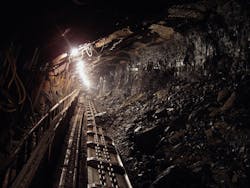Study to Investigate Sediment Contamination at California Mercury Mines
The U.S. EPA announced a settlement with Buckhorn Inc. to study contamination at the New Idria Mercury Mine Superfund Site in San Benito County, Calif. The work is expected to take more than two years to complete at a cost of approximately $2 million.
Buckhorn Inc., a reusable plastic packaging manufacturer, is the successor to the New Idria Mining and Chemical Company, a former owner and operator of the New Idria Mercury Mine. The mine, located 64 miles southeast of Hollister, Calif., operated from about 1854 to 1972 and produced more than 38 million lb. of mercury. The New Idria Mercury Mine was added to the National Priorities List in September 2011.
Under the agreement, Buckhorn will investigate the extent of contamination at the abandoned mine to identify potential human health and environmental risks. Operations at the New Idria Mercury Mine deposited between 0.5 and 2 million tons of waste rock, calcines, and tailings covering more than 40 acres at the site.
While EPA and Buckhorn have taken recent steps to minimize release of contaminants from the site, years of mercury pollution and mine drainage have contaminated San Carlos Creek and its sediments with levels of mercury toxic to aquatic organisms. During periods of heavy precipitation, floodwaters wash these contaminated sediments downstream where they may reach the Mendota Pool and San Joaquin River, which flows into San Francisco Bay.


